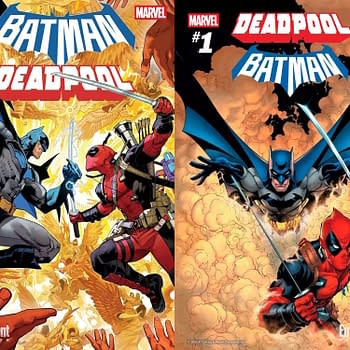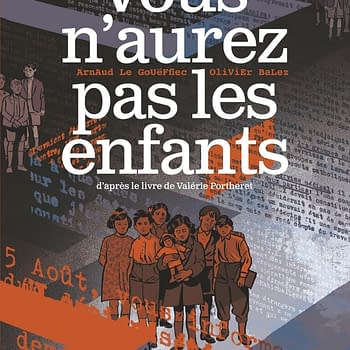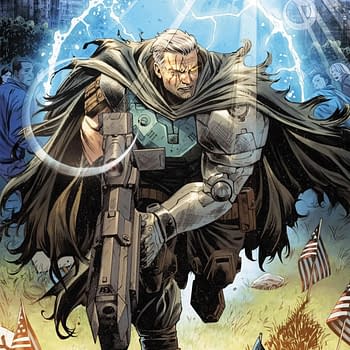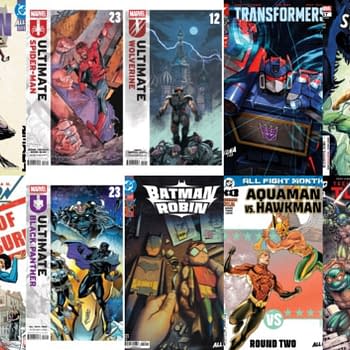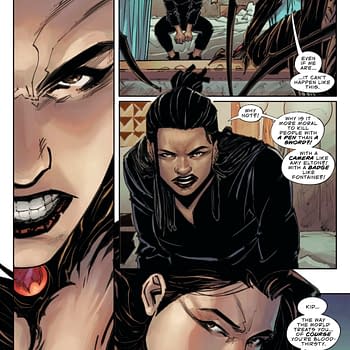Posted in: Comics | Tagged: Comics, dc, entertainment, gendercrunching, marvel
Gendercrunching July 2012 – Marvel, DC And The New York Times Bestseller List
Tim Hanley writes for Bleeding Cool;
Both publishers were down in July, but Marvel stayed on top as DC fell all the way into single digits in what wasn't a particularly impressive month for anyone. Also, we take a look at the New York Times bestselling comics and see how they stack up against the Big Two.
DC COMICS
An overall total in the single digits is never good to see. In July 2012, DC Comics released 79 new books with 674 credited creators, 607 men and 67 women. Here are their stats:
DC dropped 0.2% overall, which isn't huge, but falling to 9.9% isn't so great. Things were up and down across the board, by very slight amounts. Writers, pencillers, and inkers all fell less than 1%, while letterers stayed the same. The other four categories all rose, with colorists getting the biggest jump with 2.2%. Altogether, some editorial reshuffling has lowered those categories and there are a lot of very small numbers on the creative side of the chart. With editorial now sorted, and lower, we'll need to see more on the creative side for DC to improve.
Compared To A Year Ago: DC was at 11.3% overall in July 2011, so they've dropped 1.4% since last year.
MARVEL COMICS
Marvel didn't really light it up either, but they stayed high enough to win the month. In July 2012, Marvel put out 70 comics featuring 588 credited creators, 522 men and 66 women. Let's look at their stats:
They're down 0.4% from last month, a bigger drop than DC but still relatively decent for an overall total. They're lucky to only fall that far, because there were some big losses, with colorists and editors both falling nearly 10%. Pencillers and inkers lost more than half of their June totals as well. Cover artists and writers gained a percentage point or so, and letterers stayed at zero, of course. Ultimately, while their overall total only fell a bit, by category there were some rough losses in July.
Compared To A Year Ago: Marvel was at 8.8% a year ago, so they've come up a fairly impressive 2.4%.
DC AND MARVEL VS. NEW YORK TIMES COMIC BESTSELLERS
Last month we looked at race statistics, which proved popular to say the least. This month we court controversy yet again with our look at the New York Times comic bestsellers!! This nuts and bolts stats conversation will OUTRAGE the masses. Commenters will be LIVID as we pare down the data to get the most accurate comparison. It's going to be a FIRESTORM!!
Or not. Probably not. But it's going to be interesting and informative, which is always fun.
The New York Times lists the bestselling comics every week in two categories, hardcover and softcover. To get a sense of the gendered breakdown of these lists, I tallied all the names for both categories for all of 2012 up to the beginning of September to make a master list. The NYT only lists writers and artists, so I went through the DC and Marvel solicits for July 2012 and tallied up just those names as well so we could have some comparative numbers. Then I charted them up, both in terms of the credited creators (ie. a creator gets counted once for every book they are credited in) and the different creators (ie. a creator gets counted only once regardless of how many books they do).
Now, the New York Times bestseller lists don't tell us everything that's available outside of the direct market. While we count EVERY comic that DC and Marvel release, the New York Times lists are, obviously, just the bestsellers. This comparison isn't apples and oranges, but it is all of the apples versus the bestselling apples. On the other hand, we're getting an excellent sense of what's most popular outside of the direct market, and how that breaks down by gender.
And what's the most popular? Robert Kirkman. Good lord that man is omnipresent on the NYT bestseller lists, as is The Walking Dead generally. Of the 1144 total credits from the NYT, Kirkman counts for 175 of them or, 15.3%. Charlie Adlard is second at 114, and Tony Moore is third with 51. Those books are insanely popular.
But there are other creators, so let's see how they stack up:
That's a lot more ladies. For credited creators, the NYT had 4.9 times more female creators than DC, and 2.5 times more than Marvel. For different creators, it was 3.1 times more than DC and 1.8 times more than Marvel. This is a considerable difference.
Also, unlike the Big Two, female creators on the NYT list had more credits than men on an individual basis. A female creator on the NYT list had an average of 7.8 credits each, while a male creator averaged 6.1 credits. Women at DC and Marvel had fewer credits each than their male counterparts, 1 to 1.28 at DC and 1.25 to 1.45 at Marvel.
However, there's a sort of redundancy in these stats. We're trying to compare these lists against DC and Marvel but the lists themselves include DC and Marvel books!! So what happens when we cut out the Big Two from the NYT stats? Let's take a look:
Things are even more pronounced now. The Big Two were clearly quite a bring-down on the NYT's female creator numbers, perhaps not surprisingly. And, of course, the differences have changed. Now, for credited creators, the NYT had 6.9 times more female creators than DC and 3.6 times more than Marvel, while different creators were 4.7 more than DC and 2.7 more than Marvel. That is a lot more ladies.
So we can come to a few conclusions. First, non-Big Two bestsellers have a lot more female creators than Big Two bestsellers. Second, female creators seem to be much more common in hardcover and softcover comics of various genres than in the Big Two's monthly floppies. Third, the female creators of these hardcover and softcover comics of various genres get more credits proportional to males than their Big Two counterparts do. Fourth, women sell; they're all over the NYT bestseller list. Fifth, people LOVE Kirkman.
All in all, the Big Two aren't great with women. This isn't a surprising revelation, of course, but it's interesting to see them compared to other comics. The New York Times comic bestsellers represent quite a broad spectrum of publishers and genres, and the wider comic book world blows DC and Marvel out of the water in terms of female creators. Though I suppose it's not terribly difficult to have more female writers and artists than the Big Two, seeing as they've set the bar so very low. I could walk outside and throw a tennis ball and it would bounce off more female writers and artists than are employed at DC and Marvel.
NOTES:
To learn more about this statistics project and its methodology click here, and to see the previous stats click here. You can visit Tim at Straitened Circumstances and follow him on Twitter @timhanley01.










